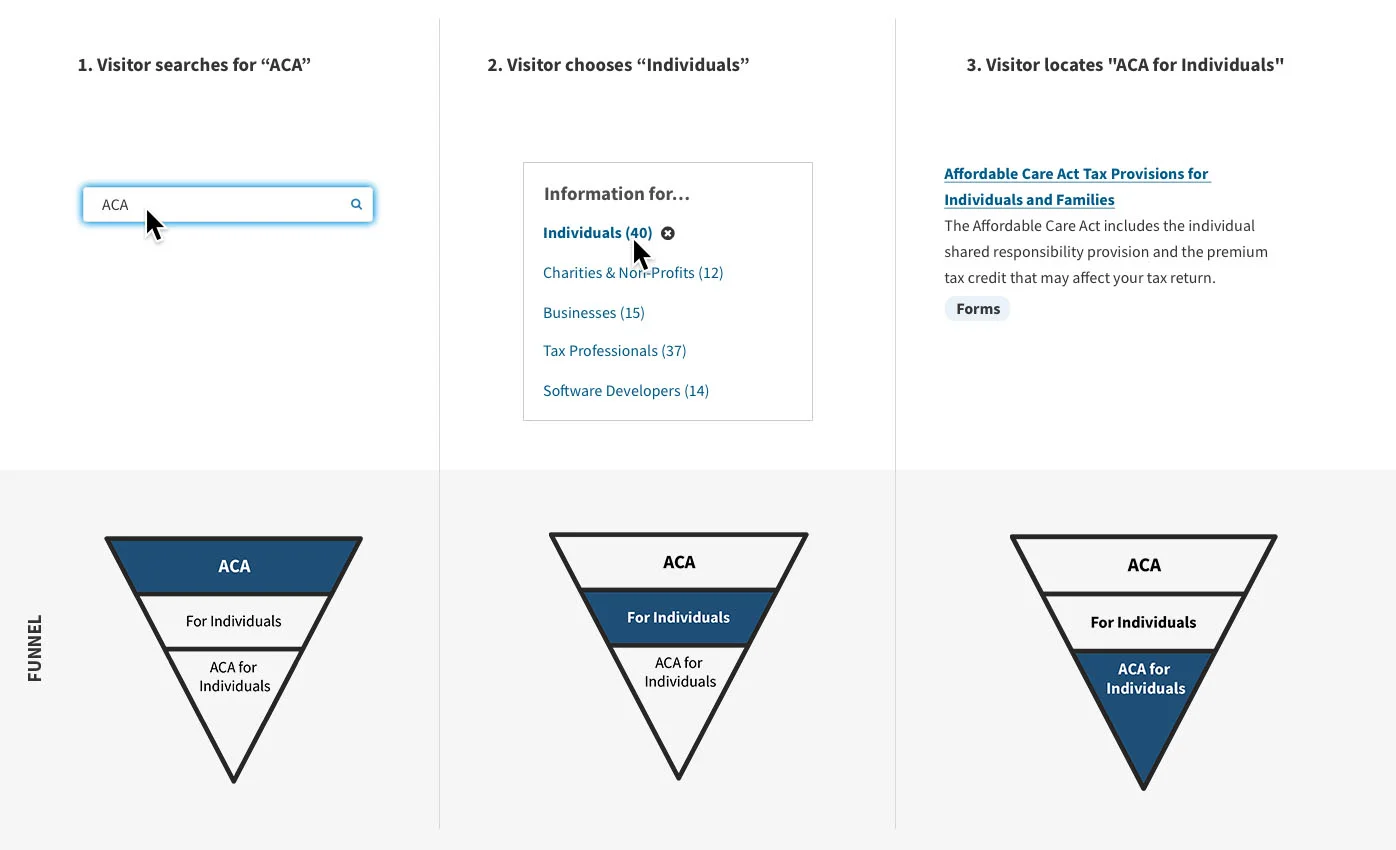IRS.Gov Faceted Search
Overview
The IRS transitioned it's search platform from DigitalGov to SOLR in August 2017, which allowed us to implement faceted search on IRS.gov for the first time. The goal of creating a faceted search is to provide IRS.gov users a more efficient way of exploring our large collection of content by applying multiple filters that are based on newly created Drupal vocabularies. The filters help provide a search experience that meets the demand of users at every experience level.
Goals
- Enable True Guided Navigation: A list of filters are available for every search in order to guide taxpayers through the optimal path to find the most relevant content
- Provides Intuitive Interface: Refining your search is easier than ever with an intuitive user interface that allows you to slice and dice search results by 13 different facets
- Improves Precision: As IRS.gov content continues to grow, increasing search space requires increased precision to help taxpayers find exactly what they need
- Increases Efficiency: Users will find forms, publications, news or tax guidance faster
- Reduces Need for Complex Queries: Significantly reduce the need for users to refine their search
Approach
Building a search engine, particularly one with enhanced capabilities such as filters, requires a strong and robust backend information architecture. Because IRS.gov has hundreds of thousands of different types of content, we knew a hierarchical folder structure would not be practical or useful to CMS users trying to find content.
Instead, IRS.GOV relies on a linear or flat based architecture. Each piece of content on IRS.gov (html, pdf, images, videos, etc) were tagged with a total of eight vocabularies, including subject, audience focus, format, language, and which division within the IRS is the SME.
The IA team designed the backend user experience for each content type to ensure that CMS users were able to effectively find and use the vocabularies we designed.
The flat based information architecture approach allows users (CMS & taxpayer) to scale the content using any vocabulary term(s) in any order, making the breadth of site content as big or as small as they choose.
Furthermore, the new data architecture on the backend allowed us to experiment with "filtered views" in various sections of the site where there was a repository of information that needed to be scaled down. For example, the News section of the site contains thousands of press releases, official statements, tax tips and IRS guidance resources that was difficult for users to sort through easily. Filtered views would allow users to search for content and use facet values such as content type and year to filter their results.
User Testing
In order to test the usefulness of the filters we administered two card sorts - one open and one closed. The card sorts would not only tell us if our labeling was understandable to average taxpayers, but what facets might be easily grouped together in the left hand rail.
Results
Before
After
Outcomes
The new IRS.GOV faceted search was launched in August 2017. Metrics have shown:
- The percentage of search refinements has dropped, indicating that users are finding what they need in the first try without having to edit their original query.
- Taxpayers have been using filters to refine their searches, with the most popular combination Business > Forms & Instructions. This tells us that while individual taxpayers may need more time adjusting, our super users are utilizing faceted search as we intended.
- Areas where we have been able to utilize customized searches (i.e. the Newsroom) have seen a 200% increase in searches, indicating users are more apt to engage in the content if we give them options to customize and narrow their content options.


